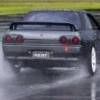The Sa Wasteland
Announcements
-
Similar Content
-
Latest Posts
-
By Murray_Calavera · Posted
I've never heard of this before, how does it work? -
By Watermouse · Posted
Silly, You need to edit your posts with some “HA” quotes -
By Dose Pipe Sutututu · Posted
If go with OVO or similar, you can buy electricity off peak periods of the day for next to nothing, i.e. when the sun is out and everyone is exporting and noone is consuming. I'm also planning to join a VPP and sell back during peak hours. Bro science stacks up, and also the battery inverter has a spare MPPT port, so I could add another solar array. I still have the roof space for at least another 7 panels.




Recommended Posts